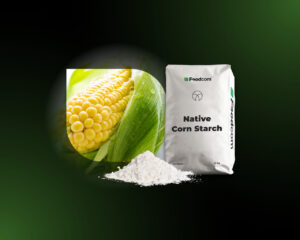- Potato starch and tapioca prices remain stable, but the situation is offset by limited supply and production difficulties.
- The decline in corn starch prices is due to high supply from South America coupled with limited industrial demand.
- Drought in Europe threatens crop yields and the stability of the plant-based market, particularly in Germany and France.
- Modern automation in the Australian nut sector shows how technology can counteract labor shortages and increase efficiency.
The latest market analyses point to growing contrasts in the starch and agricultural sectors. While potato starch and tapioca prices remain mostly stable, underlying supply challenges and regional production issues signal potential disruptions. Meanwhile, falling corn starch prices, rising agricultural production costs in the EU and state-of-the-art automation in the Australian peanut industry paint a dynamic picture for global agricultural markets. Severe drought across Europe is adding to the uncertainty. Learn the key facts shaping the current market situation.
Maize starch
Native Corn Starch prices have fallen slightly in recent weeks. The reason for this is the high availability of raw material, particularly from South America, which is influencing grain prices on futures markets in Europe and the USA. At the same time, we are seeing stable demand from the food industry, while demand from industrial sectors remains limited.
Some of the processing plants that have increased their capacities are now operating below target levels – mainly due to weaker utilisation in technical applications. Seasonal fieldwork in the EU has completed as planned, providing a stable foundation for the months ahead.
However, the market situation is not free of uncertainty. US customs policy and geopolitical tensions are affecting shipping costs, which are showing high volatility. In the current environment, logistics are becoming as important as the price of the product itself.
Potato starch
Native potato starch prices remain largely unchanged, but behind this stability is a tight supply-demand balance. Interest in the product – especially in the food sector – is high and availability is limited. Organic starch has been virtually sold out and the next production will not start until after the harvest planned for September.
In the industrial sector, the product does not compete on price with maize- or wheat-based alternatives, which limits its use outside the food industry. Agro-meteorological conditions in Europe are generally favourable for the crop, although local periods of drought may affect final yields.
The euro/dollar exchange rate remains unfavourable for exports to the US. Combined with volatile freight rates, this situation may affect the availability of product in overseas markets. The situation is also influenced by Belarus, where potato shortages, rising prices and limited availability are due to falling production, price controls and increased exports mainly to Russia.
Tapioca starch
The tapioca market remains tight despite the lack of clear price movements. Demand – particularly from Asia, including China – remains high, but production capacity is temporarily constrained by technological downtime at some producers.
In addition, the situation in plantations is more difficult than usual. Supplies of cassava roots are limited and the starch content of the raw material is declining – among other things due to heavy rainfall. Excessive water increases the risk of root rot, causing farmers to speed up harvesting in lower-lying regions. This, in turn, limits the amount of raw material available later in the season.
As with other starches, logistics costs are a significant factor. Sea transport remains volatile and additional tariffs still apply to the main exporting countries.
What else?
In the first quarter of 2025, average prices for agricultural products in the European Union increased by 2.6% compared to the same period in 2024, marking the second consecutive quarter of increases, Eurostat reported. The largest increases were in milk ( 12.6%), eggs ( 10.7%) and cereals ( 9.6%), while the strongest decreases were in olive oil (-43.5%), potatoes (-13.4%) and pigs (-11.2%). The costs of non-investment inputs such as energy, fertilisers and feed also increased, albeit marginally ( 0.2%). Of the 23 EU countries that recorded an increase in the price of agricultural output, the highest rates of increase were recorded in Ireland ( 19.3%), Luxembourg ( 15.6%) and Hungary ( 14.6%). In contrast, the largest decreases occurred in Spain, Greece, Portugal and Malta.
Australian nut plantations are entering a new era with autonomous tractors controlled remotely from any device. As part of the Hort Innovation project, worth more than 220 million Australian dollars, advanced AI technology, developed by Bluewhite, is being introduced to almond, macadamia and pistachio crops. The innovative system allows one person to manage an entire fleet of vehicles 24 hours a day, even without being in the field. This is an answer to the growing staff shortage in agriculture and a way to make work more efficient. Autonomous tractors not only perform tasks, but also collect real-time data to support agronomic decisions. The technology has previously been tested successfully in the US and has the potential to revolutionise nut production outside Australia as well.
Europe has been struggling with a shortage of rainfall since the start of the season, which is increasingly affecting the crop. The situation is worst in France and Germany, where soil moisture levels are critically low and water bodies are drying up. Moisture deficits are also recorded in Spain, Portugal, Italy, the Balkans and Ukraine. The short-lived rainfall in Germany has only improved the topsoil, but has not replenished rivers and reservoirs. France is still waiting for any real rainfall. Forecasts are worrying – the high winds will keep the weather dry until at least early July, with temperatures reaching 30-35°C, accelerating evaporation and increasing stress on plants and animals. Spain, Portugal and Italy are partly coping thanks to winter water reserves and irrigation systems. However, France and Germany are at risk of a severe decline in yields of cereals, oilseeds and sugar beet. In the Balkans and the lower Danube, crops without irrigation are also in urgent need of rain, although there the scale of the problem is smaller. The situation in Germany and France will be crucial for the total European harvest.
![Trends in the market for plant-based products and the hidden risks behind stable prices [76th Edition of the PLANT-BASED Newsletter] Trends in the market for plant-based products and the hidden risks behind stable prices [76th Edition of the PLANT-BASED Newsletter]](https://foodcom.pl/wp-content/uploads/2023/08/Foodcom_Plant-Based_Newsletter-1520x760.jpg)






